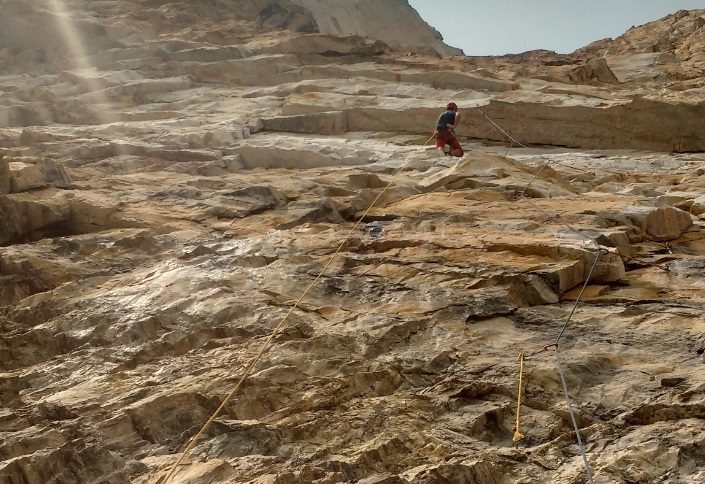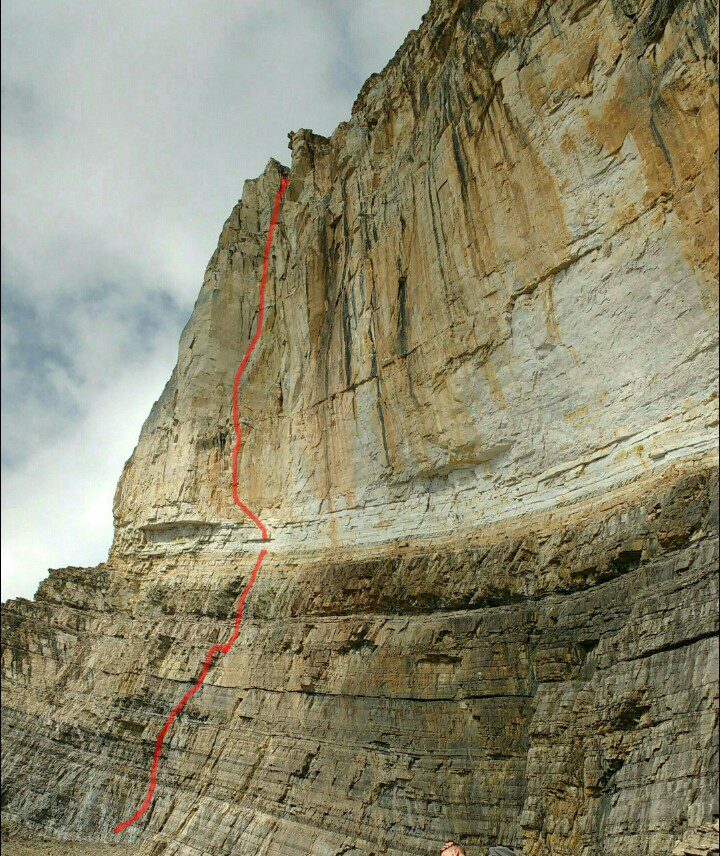Prairie Gold is New Alpine 5.11 in Canadian Rockies


Niall Hamill and Grant Stewart have made the first ascent of Prairie Gold on Peyto Tower on Mount Wilson in the Canadian Rockies.
The eight-pitch 5.11c climbs 280 metres of steep rock with nice crack systems and some loose rock.
Prairie Gold gains golden upper dihedrals on the left side of the big face and is likely the easiest free line on the face.
“Unbelievable that only one other route exists on this face (The Marra/Richardson 5.9 A1) and has seen little action,” said Hamill.
“Thanks to Sam Tucker for joining me on a mission here in July and Thanks to Canadian Alpine Tools for sharing your bomber pins.”
Mount Wilson is the big mountain just north of the Saskatchewan River Crossing on the Icefields Parkway between Banff and Jasper. The peak is popular in the winter for ice climbing.

Prairie Gold Beta
Pitch one: Climb a hand crack in a right facing corner and over a bulge, follow this to an encounter with a roof (crux) belay above roof to a fixed nut belay (5.10c 55m).
Pitch two: As the angle steepens, the gear opportunities and rock quality lessen. Step left, clip a bolt and then another bolt below the roof, to a two pin and nut belay (5.10c 20m).
Pitch three: Follow a zig zagging line of seven bolts, trending left through sandy face holds. The rock quality improves as you reach the roof. Pull the roof (crux) and trend up and right to the two-bolt anchor on the ledge (5.11c 35m).
Pitch four: Move the anchor left to a single bolt on the left side of the ledge below the stacked flakes and dihedral. Follow cracks up and left and traverse a foot-ledge left into the next crack system. Up this, into a steep stemming section below the 2-bolt anchor on a mossy broad ledge (5.10c 35m).

Pitch five: Climb up ledges to the base of the giant flakes at the base of the steep upper wall, following sandy flakes into a right facing hand crack corner that terminates at a foot ledge and two-bolt belay (5.8 40m).
Pitch six: Traversing right from the anchor, slab moves guarding access to the wide, water streaked crack can be protected with a kb and purple tcu. Up the steep crack, and step left to a two-bolt belay (5.11a 25m).
Pitch seven: Step right from the belay into the fist crack to a short roof encounter. Follow this crack past a rappel bolt, trending right of the prow feature, belay from gear at a stance below a chock-stone chimney (5.11a 40m)
Pitch eight: Climb left from the belay and make wide moves through a steep bulge. Follow the shattered hand crack up to another bulge, topping out to a good stance (5.11a 30m).


